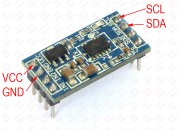Hi and Welcome All, In this tutorial series I will show you how to make a simple obstacle avoiding robot using the xBoard v2.0 microcontroller board. xBoard v2.0 is well suited for developing small intelligent robots as it is compact in size, has four DC motor controller, can be programmed using USB Port and many other features. It is also very easy to learn and use. The xAPI, which is a set of C functions which makes complex programming tasks such as PWM ,LCD, Remote Control etc very easy for beginners. You can buy it from here http://shop.extremeelectronics.co.in/product_info.php?cPath=23&products_id=111 Its design is open so if you don’t want to buy the board you can make it yourself at home by the help of its schematic. The Robo’s Task The task of our robo is simple. To move randomly in an area avoiding obstacles, that’s it ! Though the task is simple, its a complete autonomous robot in itself. It has a brain which reads sensors and makes decisions and command the motors. In the course of making the robot you will learn various basic techniques which will be of great use for your further projects. Our Final Robot will look like this. AVR ATmega32 Based Obstacle Avoiding Robot The following Video Demo Shows the Robo in Action The following Video was […]

